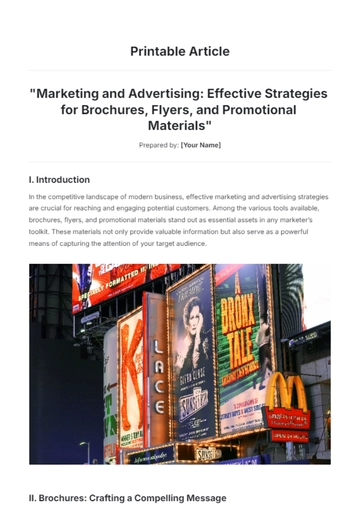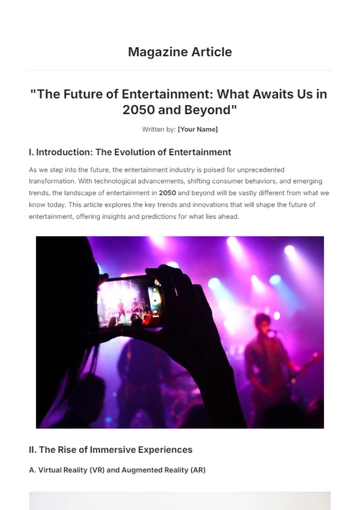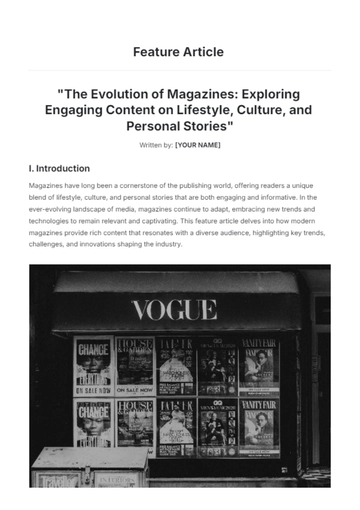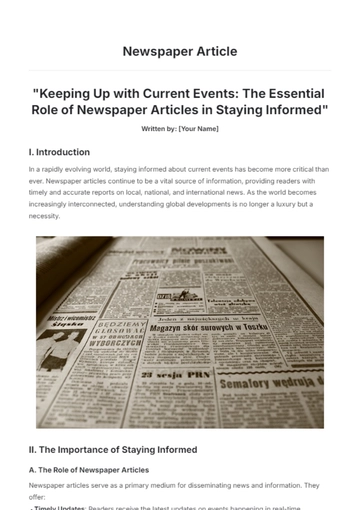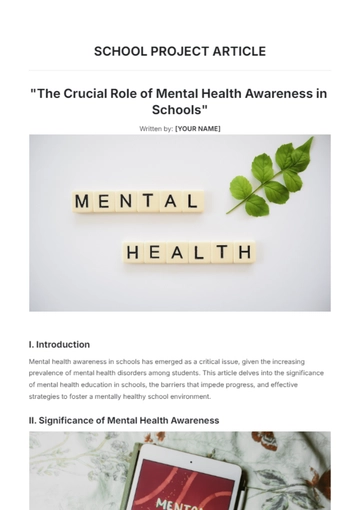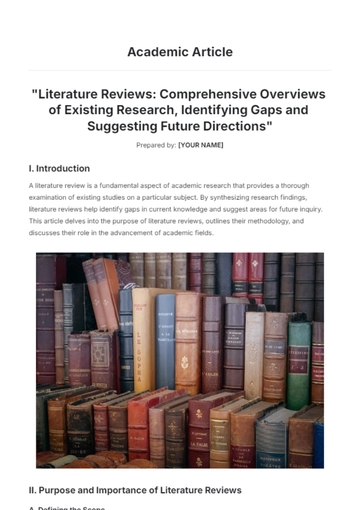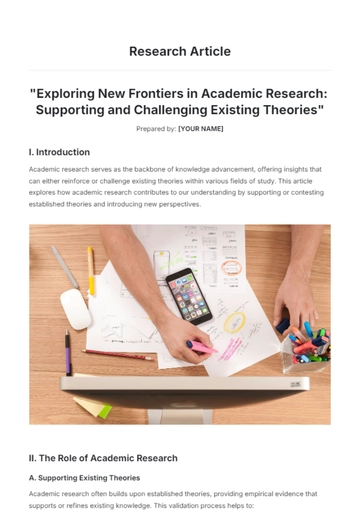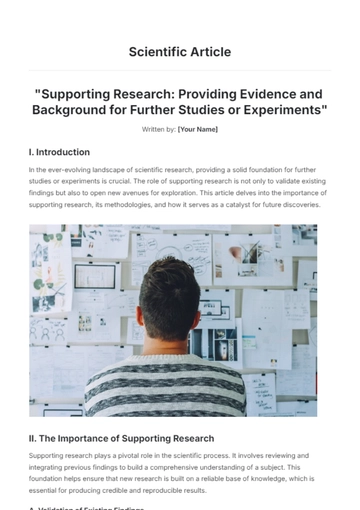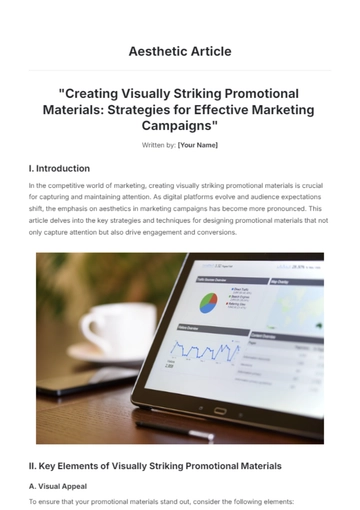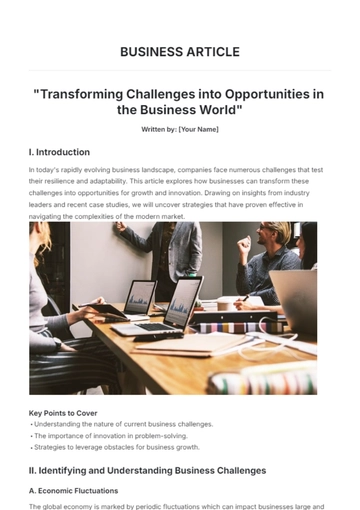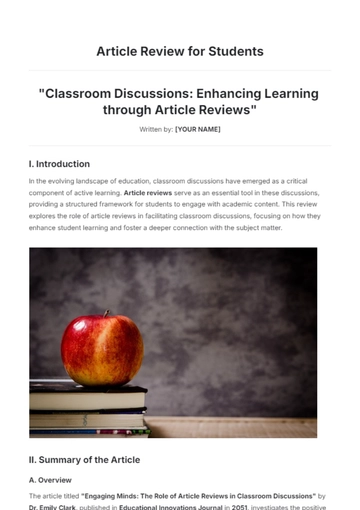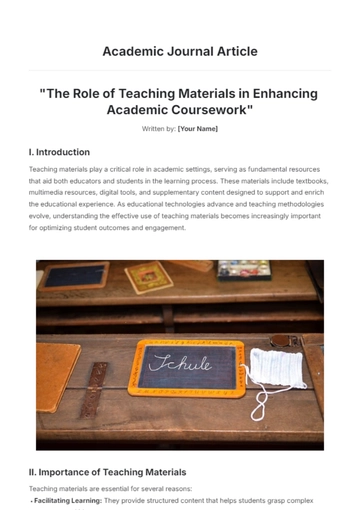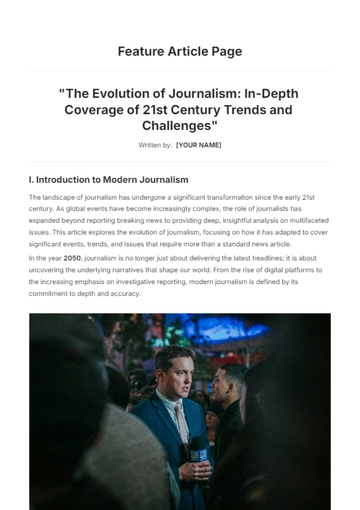Free Persuasive Article
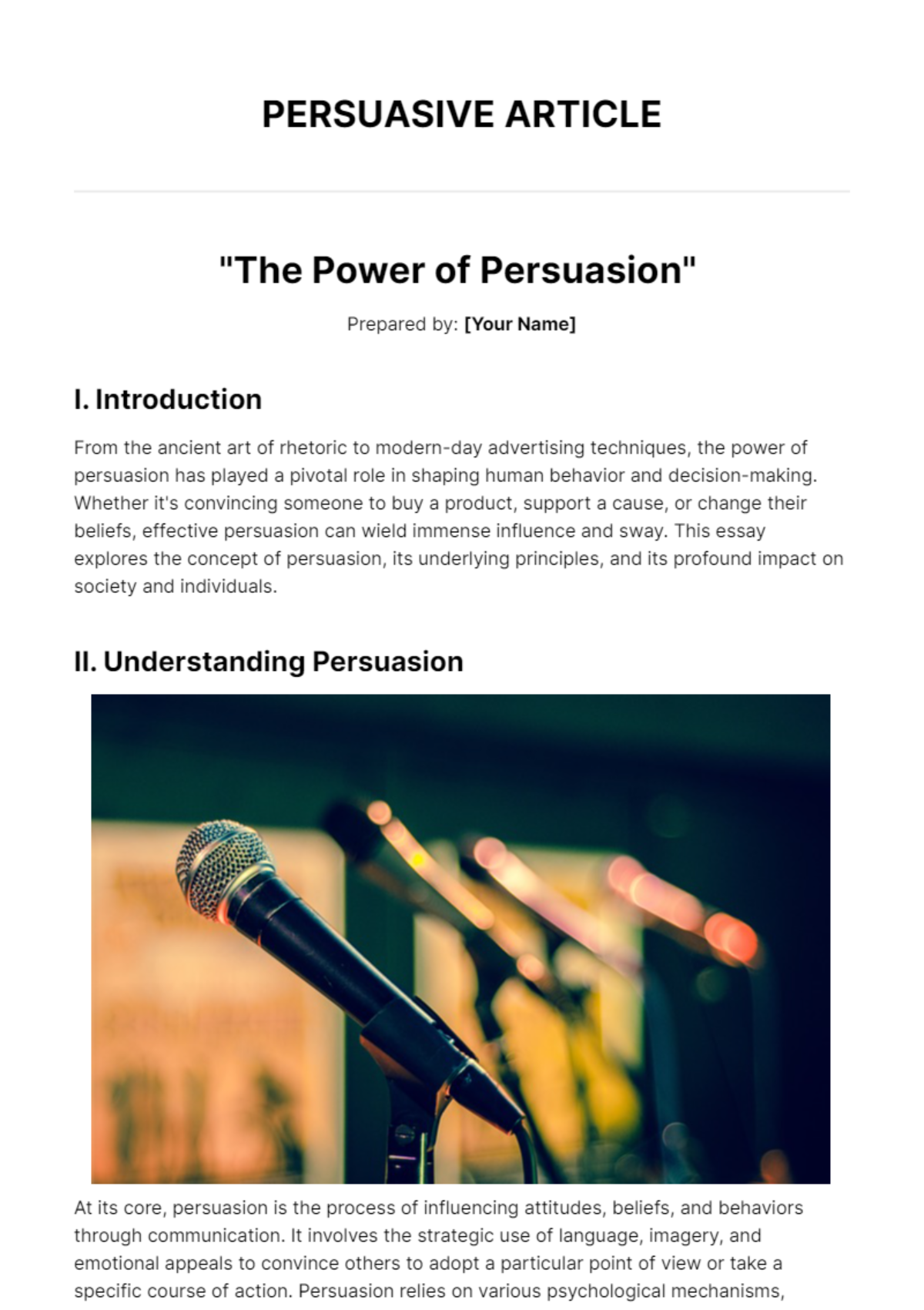
"The Power of Persuasion"
Prepared by: [Your Name]
I. Introduction
From the ancient art of rhetoric to modern-day advertising techniques, the power of persuasion has played a pivotal role in shaping human behavior and decision-making. Whether it's convincing someone to buy a product, support a cause, or change their beliefs, effective persuasion can wield immense influence and sway. This essay explores the concept of persuasion, its underlying principles, and its profound impact on society and individuals.
II. Understanding Persuasion

At its core, persuasion is the process of influencing attitudes, beliefs, and behaviors through communication. It involves the strategic use of language, imagery, and emotional appeals to convince others to adopt a particular point of view or take a specific course of action. Persuasion relies on various psychological mechanisms, including cognitive biases, social proof, and emotional manipulation, to shape perceptions and elicit desired responses.
III. The Elements of Persuasion
Effective persuasion typically involves several key elements, including credibility, emotion, and logic. Credibility, or ethos, refers to the perceived trustworthiness and expertise of the persuader. Establishing credibility is essential for gaining the trust and respect of the audience, making them more receptive to the persuasive message.
Emotion, or pathos, appeals to the audience's feelings and desires, evoking empathy, excitement, or fear to elicit an emotional response. Finally, logic, or logos, relies on rational arguments and evidence to support the persuasive message, appealing to the audience's intellect and reasoning abilities.
IV. The Techniques of Persuasion

Persuasion employs a variety of techniques and tactics to influence behavior and decision-making. These may include social proof, where the persuader leverages the principle of conformity by highlighting others' support or endorsement of the message.
Reciprocity involves offering something of value to the audience in exchange for their compliance, while scarcity creates a sense of urgency or exclusivity to motivate action. Other techniques, such as framing, priming, and anchoring, manipulate perception and cognition to shape attitudes and preferences.
V. The Impact of Persuasion
The power of persuasion extends far beyond individual interactions, shaping public opinion, political discourse, and societal norms. Advertising, propaganda, and marketing campaigns harness the principles of persuasion to promote products, influence consumer behavior, and shape brand perceptions. In politics, persuasion is used to sway voters, rally support for policies, and advance political agendas. Additionally, persuasion plays a crucial role in social movements, activism, and advocacy efforts, mobilizing individuals to take action and effect social change.
VI. Conclusion
In conclusion, the power of persuasion is a potent force that permeates every aspect of human interaction and communication. Whether in advertising, politics, or everyday conversations, effective persuasion can influence attitudes, beliefs, and behaviors, shaping the course of history and shaping the fabric of society.
Understanding the principles and techniques of persuasion is essential for navigating the complex world of persuasion, enabling individuals to critically evaluate persuasive messages and make informed decisions. Ultimately, the ability to wield persuasion ethically and responsibly empowers individuals to advocate for their beliefs, effect positive change, and build a more persuasive and persuasive world.
- 100% Customizable, free editor
- Access 1 Million+ Templates, photo’s & graphics
- Download or share as a template
- Click and replace photos, graphics, text, backgrounds
- Resize, crop, AI write & more
- Access advanced editor
Master the art of influence with our Persuasive Article Template, brought to you by Template.net. Downloadable and completely customizable, it empowers you to sway opinions effortlessly. Whether you're advocating for change or selling a product, this customizable template is your persuasive powerhouse. With print-friendly formats and compatibility with our AI Editor Tool, crafting compelling arguments has never been more seamless.





